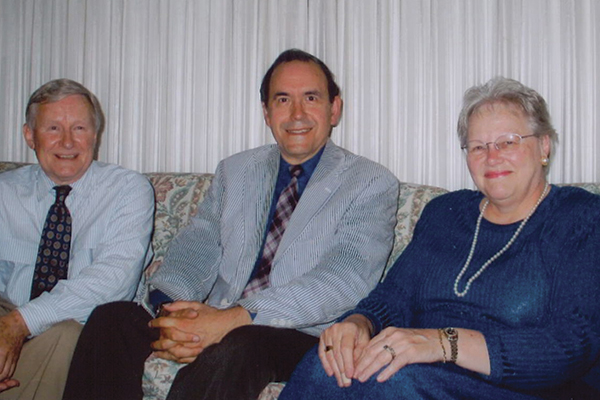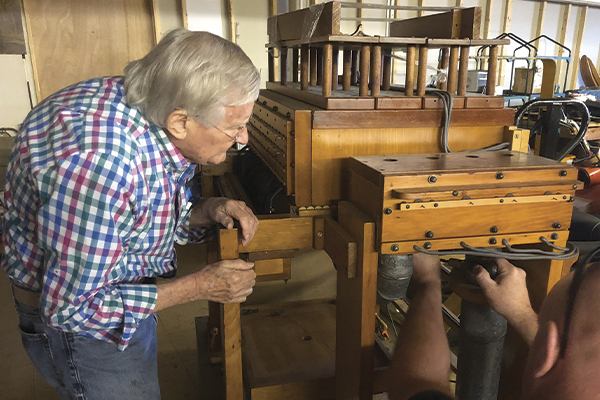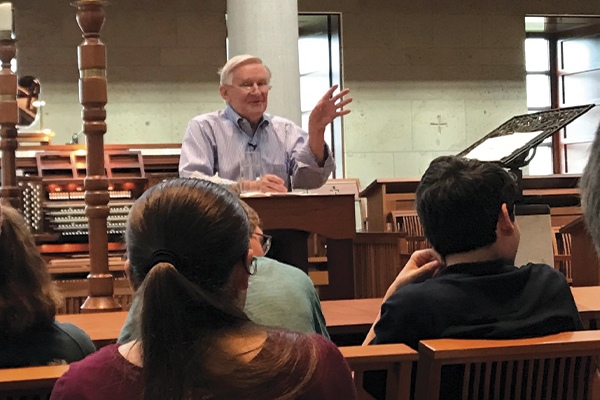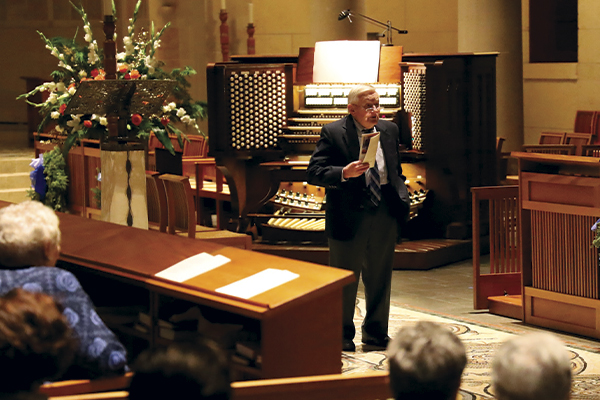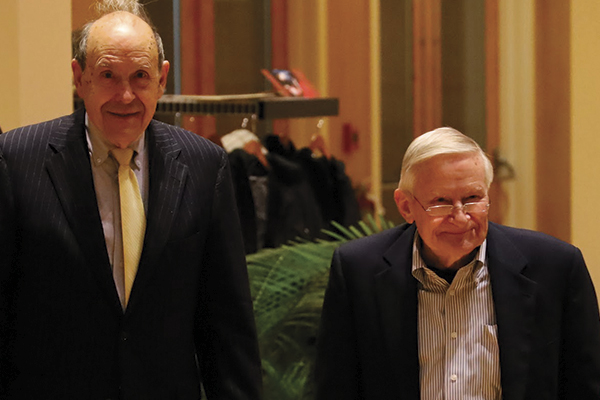Nelson Barden
Born and reared in Lebanon, New Hampshire, Nelson was educated at the University of New Hampshire (Durham) before moving to Boston in 1957. At first working with Boston organ tuner Roy E. H. Carlson, Nelson established his own business in the early 1960s. Alongside pipe organ care, Nelson developed a specialty of restoring automatic musical instruments, eventually in partnership with Kenneth Clark as the firm of Barden & Clark. A high-point of this period was the connection of a Welte player to the 1929 Welte organ at Boston’s Church of the Covenant, where the lost art of bygone organists was recreated and recorded.
The later 1970s found Nelson returning full-time to organ restoration. Up to this point, old organs rarely received mechanical attention without some form of alteration to the pipes and the sound. Nelson believed that early 20th-century instruments had an integrity and identity worth preserving and should be meticulously restored without change. At the First Church of Christ, Scientist in Cambridge, Nelson put theory into action with major restoration on the unaltered 1936 W. W. Kimball. Success there led to work on the landmark 1936 Aeolian-Skinner at Boston’s Church of the Advent. Here Nelson focused on expert restoration, improved access, and sophisticated means of stopping the water infiltration that had plagued the instrument.
These triumphs led Nelson to Boston University, where an opportunity arose to merge his love of automatic musical instruments with the organs of his favored period. Between 1981 and 1990, Nelson and his team restored a 12-rank 1930 Skinner and a 24-rank 1930 Aeolian, both with player mechanisms. These instruments were set up in a workshop provided by the University in a magnificent 1928 car dealership. Resplendently restored, easily walked through, and charmingly heard through their roll performances, these organs drew visitors from across the country, Canada, England, France and Germany. Eventually these two instruments combined with other material to become the Boston University Symphonic Organ, across Commonwealth Avenue at the George Sherman Union, where they can be walked through and viewed through glass.
Through this period and beyond, the Barden shop completed other projects: at Old South Church and United Parish Church in Boston (1921 and 1933 Skinners), Plymouth Church of the Pilgrims in Brooklyn Heights (1937 Aeolian-Skinner), Church of the Good Shepherd in Jacksonville, Florida (1929 Skinner), and the design and initial stages of the restoration at Longwood Gardens, the largest Aeolian with 10,010 pipes. During this period, Nelson trained many others who are now prominent voices in this field (including Sean O’ Donnell, Jonathon Ambrosino, Joseph Sloan and Joseph Rotella, all of whom have made immeasurable contributions toward the completion of the organ at the Community of Jesus.)
For the last twenty-five years, Nelson has concentrated upon the project that now caps his career and, indeed, becomes his signature in vision and sound: the amalgamated instrument for the Church of the Transfiguration, which sums up all of his fascination, ardor, and technique—his personal expression of love—for the very best of what American organ building offered in the early 20th century, put to the service of the active worship and concert schedule at the Community of Jesus.
